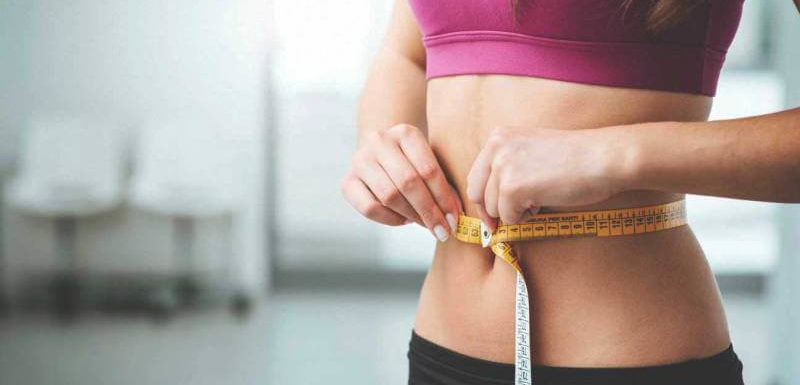It is what we are all striving for. What ultimately shapes our behaviors around diet, exercise - and swallowing a mouthful of vitamins, probiotics, fish oils, etc, on a daily basis. But for how long and how well can we, human beings, live? I can say with confidence that we can live over 100 years at least. According to Chinese lore, there was a man named Li Ching-Yuen who lived to the age of 256 years. A French woman, Jeanne Calment recently died at 122 years. Currently, the oldest known living person is Kane Tanaka of Japan, aged 117 years.
If we were to take a snapshot of the life extending efforts in the US, we would guess the average life expectancy to be up there - at least close to the 100 year mark. Yet, despite all the attention being given to extending lifespan in the scientific community - metformin, resveratrol, NAD, human growth hormone, stem cells, exosomes, severe calorie restriction, transferring blood from the young to the old - the average American only lives to about 77 years, and this number is steadily dropping.
Let’s set aside these tactics predominantly geared towards the well-heeled and consider those who are actually living over 100 years - and more importantly, living them well. I don’t know about you, but the only way I’d like to extend this particular life is if it can be lived with immense joy and passion, emotional and spiritual fulfillment, with physical grace and ease and continuous growth. In the book The Blue Zones, by Dan Buettner, highlights areas of the world where people are living to at least 100 years - Okinawa, Japan, Sardinia, Italy, Nicoya, Costa Rica, Ikaria, Greece, and the 7th Day Adventists in Loma Linda, California. Though these communities are geographically worlds apart, their lives shows how close they are in lifestyle practices. The way I see it, the people living in the Blue Zones have figured out the essence of living well and almost accidentally live longer as a result.
Here is how I breakout down.
SELF-LOVE.
There is an element of connection and care that goes into the food eaten in the Blue Zones. They primarily eat home-grown or locally grown, nutrient dense foods consisting of mostly plants, including wild foraged plants. The plant food they eat is traditionally prepared. This involves soaking, sprouting, and fermenting. Their diets are also supplemented with some animal protein, consisting of free range, grass-fed or pastured meats, and wild fish. They eat nose to tail with plenty of glycine-rich foods such as bone broth and marrow and their diets are free from any added chemicals, antibiotics and growth hormone. Packaged foods, excess sugars and processed vegetables and seed oils are never on the menu. This attention and care to what is put in the body clearly reflects self-honor and respect - self-love.
Closely connected to self-love is stress management. Stress is inevitable no matter what color your zone. What sets the happier, longer living folks apart are the ways in which they manage stress. For the Okinawans, it is their mindset. They live by the concept of “tangay” or having a going-with-the-flow vibe about them. For Sardinians, it means a nightly dinner with family and/or friends and a glass of locally made, natural wine.
We can all get a little closer the the Blue Zones way of eating and managing our stress by cooking more often (aim for 80% of the time), sharing time with loved ones, having a meditation practice, using breath work to alleviate stress.
One final note about loving yourself. Don’t smoke. If you do, quit. You are not doomed to an early death. Your body has the capability of reversing the damage.
CHALLENGES.
We are all susceptible to repetition. Routines. I champion (and am highly protective of) my morning routine. If all else crumbles as the day unfolds, I have, at the very least, had an experience of expansive optimism, calm and fluidity first thing in the morning. It grounds me.
But a strong argument can be made for balancing out the sweet and comfortable with challenges. Our physical, mental and (dare I say) emotional health depend on it. Challenges are the only way we are able to move forward.
So, challenge yourself through food. Eat wild plants. Plants, especially wild, have a mildly toxic built-in defense mechanism to protect themselves. Every time we eat wildly, our bodies react to these toxins and we experience a positive physiological effect. This is the concept of hormesis and with regards to plants, xenohormesis. The Blue Zoners eat a large amount of wild plants, herbs, and spices.
Another way to challenge yourself through food is to not eat it. Fast sometimes. Calorie restrict sometimes. Almost every culture has built into their lifestyle periods of fasting, eating less or abstaining from certain foods at specific times of the year. Your mitochondria will thank you. Every few months I challenge myself with a bone broth-mini fasting reset week or my riff on an Ayurvedic calorie restricting cleanse using kitchari.
Challenge yourself through movement. Engage in high intensity movement every so often. While you could find this type of high intensity training at the gym in the form of interval classes or Crossfit, you can also create it at home. Challenge your kids to a game of tag. Pick something heavy up and move around a few times a day. Having a heavy kettlebell hanging around helps with this and cranks up the heart rate in a hurry. I make an effort to pick mine up and do 30-50 swings a few times a day.
Be temperature challenged - get very hot and very cold. Not only is this good for your physical body by helping with detoxification, the creation of brown fat and improving vagal tone, but has numerous psychological and cognitive benefits as well.
Trying new things falls into the challenge category. Be adventurous. Take trips. Learn new activities. Your body, brain and sense of happiness are improved when you break out of the norm.
CONNECTION.
The last piece of the The Blue Zones puzzle is having a sense of deep connection. To the community, to family, to nature, and perhaps most importantly, to their purpose. This has something to do with the notion that there is a bigger meaning in life.
Having social rituals helps instill this feeling. Some people find this in church. Others in sharing meals with family and/or friends. It may be helpful to join a club surrounding something you love to do. Think back to when you were a child. What did you most look forward to doing? Might it be time to rediscover that hobby?
Movement is also tied into this. Low level movement all day long keeps us connected to our bodies and more scientifically keeps chemicals and hormones flowing, keeping our joints fluid and our brains healthy. Moving in nature is even better. Nature nurtures us in many ways. Sunlight (dose dependent) heals. Gardening, walks on the beach, spending time in the forest amongst the trees are all great ways to do this.
I find connection through cooking. I love the friendships I’ve made at the farmers markets here in LA. I am passionate about learning new recipes, trying new techniques and spices, experimenting with different varieties of foods and flavors, and sharing my creations with my family and friends. Food is spiritual for me and cooking meditative. I am present in every moment of it. I have deep appreciation and gratitude for the goodness the earth offers us and revel in the ability to be a part of it through my cooking.
Meditation is a wonderful practice for creating space for connection. Why not make a commitment to try 21 days of meditation. It takes about that long for a new habit to form. If you’d like some ideas on how to start, send me a note.
So now that we are on the path to a long, joyful living, let’s connect.
How can we best serve you? Would you like to see more events from us? What do you want to hear about?



















